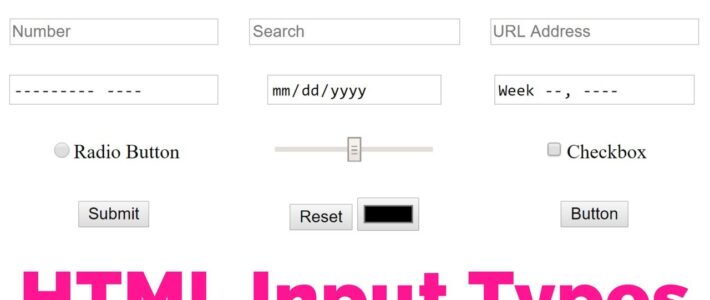HTML Versus XHTML

XHTML is a stricter, more XML-based version of HTML. HTML and XHTML are both languages in which web pages are written. HTML is SGML-based while XHTML is XML-based. They are like two sides of the same coin. XHTML was derived from

XHTML is a stricter, more XML-based version of HTML. HTML and XHTML are both languages in which web pages are written. HTML is SGML-based while XHTML is XML-based. They are like two sides of the same coin. XHTML was derived from

When users visit your website, they do things like click various links, bring mouse over text and images etc. These are examples of what we call events in JavaScript and VBScript terminologies. We can write our event handlers using JavaScript

HTML web storage; better than cookies. What is HTML Web Storage? With web storage, web applications can store data locally within the user’s browser. Before HTML5, application data had to be stored in cookies, included in every server request. Web

The HTML <video> element is used to show a video on a web page. Currently, there are three video formats supported for HTML video tag: mp4 webM ogg Example The HTML <video> Element To show a video in HTML, use the <video> element: Example

Multimedia on the web is sound, music, videos, movies, and animations. What is Multimedia? Multimedia comes in many different formats. It can be almost anything you can hear or see, like images, music, sound, videos, records, films, animations, and more.

SVG defines vector-based graphics in XML format. Scalable Vector Graphics (SVG) are an XML-based markup language for describing two-dimensional based vector graphics. SVG is, essentially, to graphics what HTML is to text. SVG images and their related behaviors are defined in

The HTML <canvas> element is used to draw graphics on a web page. The HTML <canvas> element is used to draw graphics, on the fly, via JavaScript. The <canvas> element is only a container for graphics. You must use JavaScript to actually draw

This chapter describes the different form* attributes for the HTML <input> element. The HTML <input> form Attribute is used to specify that the <input> element can contain one or more forms. The value of this attribute should be the id of the <form> element. The form

This chapter describes the different attributes for the HTML <input> element. HTML provides very strong support to build web forms using built-in elements. Web forms are often the most used functionality at the client-side or user end. The HTML provides <form> element,

This chapter describes the different types for the HTML <input> element. The <input> tag specifies an input field where the user can enter data. The <input> element is the most important form element. The <input> element can be displayed in several ways, depending